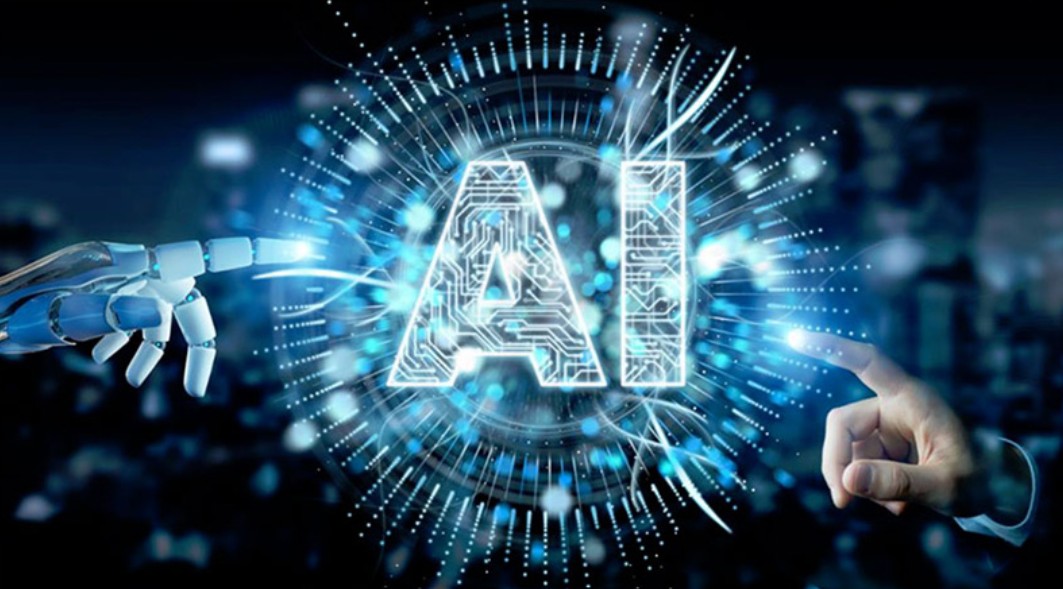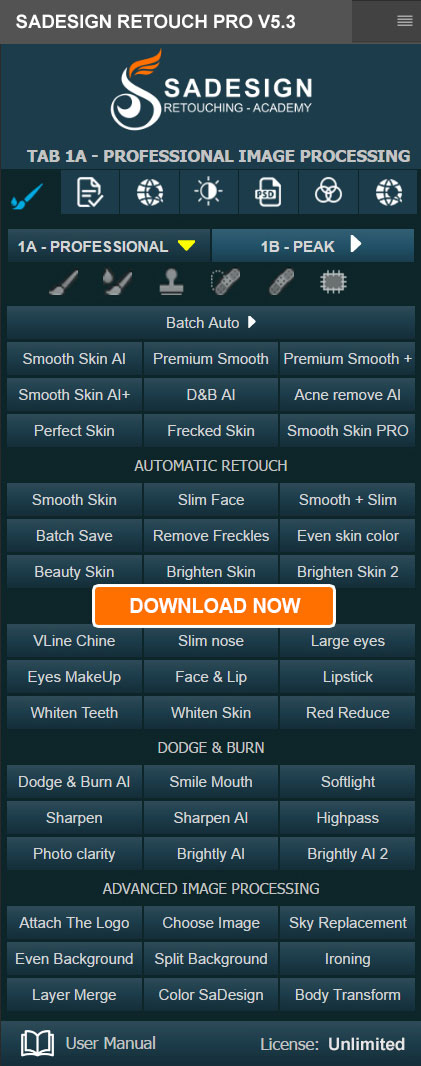Best Selling Products
Top 6 Leading AI Technologies That Are Changing the World
Nội dung
Artificial Intelligence (AI) is making huge strides that are changing the way we work, communicate, and solve problems. Let's explore the top 6 AI technologies that are shaping the future!

Artificial Intelligence (AI) is increasingly playing an important role in everyday life and various industrial sectors. This article will introduce you to the TOP 6 most advanced artificial intelligence technologies today , outstanding innovations that are changing the way we interact with technology and solve complex challenges of the modern world. From advanced machine learning systems to practical applications of artificial intelligence, the article will delve into the most prominent technologies, opening a window into the future of AI and their impact on society and the global economy. Let's explore with SaDesign the promising and potential breakthroughs of artificial intelligence through this list.
1. What is Artificial Intelligence (AI)?
Artificial intelligence (AI) is a field of computer science that aims to create computer systems and programs that can perform tasks that normally require human understanding and intelligence. The goal of AI is to develop algorithms and computer models that enable computers to “learn” from data, gain experience, and perform tasks automatically without human intervention.
.png)
Applications of artificial intelligence are diverse, including speech recognition, image recognition, autonomous driving, natural language translation, and many others. Major methods of AI include machine learning, computer vision, natural language processing, and many other aspects of artificial intelligence. AI is increasingly becoming a significant force in the way we interact with technology and shape the social and economic world.
2. TOP 10 leading artificial intelligence technologies today
2.1. Natural language generation
Machines, in processing and communicating, are significantly different from the way the human brain works. In the field of artificial intelligence, natural language processing has become a popular technology, converting structured data into native languages flexibly and efficiently. Machines are programmed with special algorithms to convert data into the desired format of the user, opening up diverse applications in many fields.
.png)
Natural language, as a branch of artificial intelligence, is particularly useful for automation content developers. This allows them to create content and distribute it in the desired format across social media and communication platforms. The flexibility of natural language reduces human intervention in the content creation process, as data can be automatically converted into charts, graphs, or other formats that suit specific goals and needs. This not only increases efficiency but also saves time and resources. However, it is also important to consider the ethical and information quality challenges associated with using natural language in the content automation process.
2.2. Speech recognition
Speech recognition, as an important branch of artificial intelligence, has taken the human-computer interaction experience to a new level. This technology converts human speech into a format that can be understood by computers, opening up a wide range of diverse and useful applications. The most typical example of this advancement is the Siri application on iPhone, where users can interact with their phones just by speaking. From making calls to booking appointments or looking up information online, Siri has become an intelligent and useful virtual assistant for millions of people.
.png)
The benefits of voice recognition are not limited to mobile phones. The technology is also being integrated into domotics systems, allowing you to control devices in your home simply by speaking. Additionally, in the medical field, voice recognition is being researched and used to help people with disabilities or limited communication skills.
However, along with the potential benefits, there are security and privacy challenges as personal information is transformed from voice to digital data. The growth of voice recognition will undoubtedly continue to change the way we interact with technology, creating a promising future but also posing new challenges that need to be carefully addressed.
2.3. Virtual agent
Virtual agents have become an indispensable tool for instructional designers, especially in the context of the growing development of information technology. Considered as a computer application that can interact with humans, virtual agents have broken down the barrier between the digital world and the user experience, bringing convenience and flexibility.
.png)
Web and mobile applications that integrate chatbots have become intelligent customer service assistants, capable of answering and resolving user queries. This not only enhances human-machine interaction, but also sets a new standard for user experience, creating comfort and flexibility in communication.
Google Assistant and Amazon's Alexa are popular virtual assistants that are proving their prowess in many areas. Google Assistant not only helps to organize meetings efficiently, but also has the ability to adapt to the user's specific preferences and requests. Meanwhile, Amazon's Alexa offers a convenient online shopping experience, with the ability to place orders using just voice.
In addition, virtual assistants also play an important role as a service (SaaS), not only as an interactive tool but also as a software application service delivery model. This benefits from not only providing a software product but also creating a flexible service, based on the specific needs of the user. Virtual assistants are not only a technology, but also an intelligent and versatile partner, bringing new opportunities and optimal performance to many areas of work and daily life.
.png)
2.4. Decision management
Today, businesses are actively deploying decision management systems to transform and analyze data, creating powerful predictive models. Decision management systems not only act as information bridges but also perform in-depth analysis of business data, supporting the decision-making process of businesses.
Decision management tools help speed up decision making, reduce risk, and automate the decision-making process. Implementing a decision management system is an effective strategy and an important step towards modernizing and optimizing business processes.
.png)
Decision management systems are widely used in many fields such as finance, healthcare, commerce, insurance, and e-commerce. This not only brings flexibility and efficiency to businesses but also helps them quickly adapt to market fluctuations and optimize decisions to achieve the best results.
2.5. Biometrics
Biometrics, an increasingly important field of study and application, provides the measurement and statistical analysis of unique human biological and behavioral characteristics. Used primarily for identification and access control, or to identify individuals under surveillance, biometric technology is increasingly proving its value in many fields.
Biometric authentication, a prominent application of biometrics, is becoming popular in public security systems and enterprises. Consumer electronics applications and POS retail points are also focusing on applying this technology. In addition to the security aspect, the main driving force behind the popularity of biometric authentication is convenience. Users do not need to remember passwords or carry security tokens, but can still ensure security and authentication.
.png)
Biometric authentication methods include fingerprints, earlobes, retinas, hand shapes, faces, or written signatures. Among them, fingerprint authentication is the most widely used and has been around for a long time. This poses great opportunities in developing and integrating biometric authentication solutions, not only for security but also to meet the growing demand for convenience and performance in today's digital society.
2.6. Machine learning
Machine learning, a key component of artificial intelligence, plays a crucial role in helping machines understand and make use of data without direct human intervention. This opens the door to diverse and potentially huge applications in many different areas of society and the economy.
.png)
In healthcare and medicine, machine learning plays a vital role in analyzing patient data. Machine learning algorithms and models have the ability to predict diseases and suggest effective treatments, increasing diagnostic capabilities and reducing the time it takes to develop new drugs.
The finance and banking industry is also a field that uses machine learning extensively. Analyzing customer data through machine learning algorithms helps in identifying suitable investment options and also suggests measures to prevent risks and fraud. Automation in this process not only saves time but also improves the accuracy and efficiency of financial decisions.
Retail businesses are also trying to use machine learning to better understand their customers. Analyzing customer data helps predict changes in preferences and shopping behavior, thereby optimizing marketing strategies and providing personalized shopping experiences. This not only enhances product appeal but also ensures customer satisfaction and loyalty.
Artificial intelligence is becoming an integral part of our lives and work. From technologies like voice recognition and virtual assistants to machine learning and biometrics, AI not only improves productivity but also opens up many breakthrough opportunities in many fields. However, along with its great potential, AI also poses challenges in terms of privacy, security and ethics that we need to consider. Staying up to date and learning about the latest AI technologies will help you not only stay on top of the trends but also make the most of the benefits that AI brings.












































